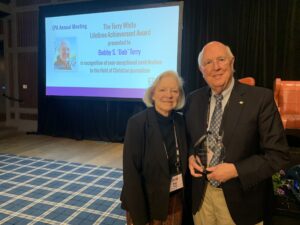
WASHINGTON (BP)–An early prophet of the tragedy of smokable cocaine has died at age 66.
Robert Byck, a psychiatrist and Yale Medical School brain researcher, warned in 1979 in testimony before the congressional House Select Committee on Narcotic Abuse and Control, “Users become almost totally dependent on the drug, will do anything to get it and may use it to the extent where they become paranoid, are totally involved with drug taking and become social cripples.”
Byck additionally stated, “We are on the brink of a dangerous drug-abuse phenomenon. We should do something about it as rapidly as possible.”
Barrett Duke, a specialist on alcohol and other drug abuse for the Southern Baptist Convention’s Ethics & Religious Liberty Commission, said Byck’s research and warnings about smokable cocaine “remind us that mere warnings of a problem or danger do very little to deter many people from engaging in harmful behavior.”
Duke said the last 20 years must have been trying for Byck. “He foresaw dark tragedy on the horizon and could only sit and watch as millions of lives were terribly destroyed.
“Dr. Byck has demonstrated it is possible to be proactive in the fight against drug abuse,” Duke said. “It is my prayer that God will raise up a generation of leaders in this nation who are able to respond to the warning calls of future researchers like Dr. Byck so that we can stop the downward spiral of decay into which drug abuse is dragging our entire culture.”
Byck (pronounced bick), in his research, found that Peruvian coca leaves, refined into a potent smokable paste, gave a first-time user “a very intense euphoria almost immediately after he starts smoking the cigarette.” The body takes in enormous doses of cocaine, and the patterns of use become “compulsive and continuous,” Byck told the congressional panel. Later, another form of smokable cocaine, a rock-like lump called “crack,” ignited an even-worse epidemic of smokable cocaine addiction.
Byck’s early 1970s study of another smokable drug resulted in another landmark discovery that a major component of marijuana, tetrahydrocannabinol (THC), had a direct effect on nerve cells and was more dangerous than was commonly thought at the time.
“Back then,” Seth Powsner, a Yale colleague, told The New York Times, “a lot of people thought smoking marijuana was like getting in a hot tub … .”
Byck, of Gilford, Conn., suffered a stroke Aug. 6 and died three days later in a Boston hospital.
“He was a good man and an excellent teacher,” his widow, Susan Wheeler Byck, told Baptist Press Aug. 28. Saying she wanted to protect her family’s privacy, she would not comment further about her husband.
“When necessary,” the ERLC’s Duke reflected, “the knowledge of danger must be followed by laws and enforcement. Drug abuse is one of those harmful activities that society must restrict. Its destructive capability to individuals and society is brutally evident. We can never allow it to gain a greater foothold. All dangerous drugs must remain illegal, and their illegal presence must be rooted out. Then, while we reduce the supply of illegal drugs, we must engage in an intense effort to educate people of the dangers of illegal drugs so that we also eliminate the demand.”
Byck, born in Newark, N.J., followed his father and older brother into medicine. He received his medical degree from the University of Pennsylvania. In 1969, he trained at Yale as a psychiatrist and then joined the faculty, becoming a professor of psychiatry and pharmacology in 1979.
Other than his wife, Byck is survived by three sons: John, of Gilford; Lucas, of Norwalk, Conn.; Carl, of Santa Rosa, Calif.; a daughter, Gillian Overholser, of Marblehead, Mass.; a brother, Walter, of Santa Rosa; and three grandchildren.














